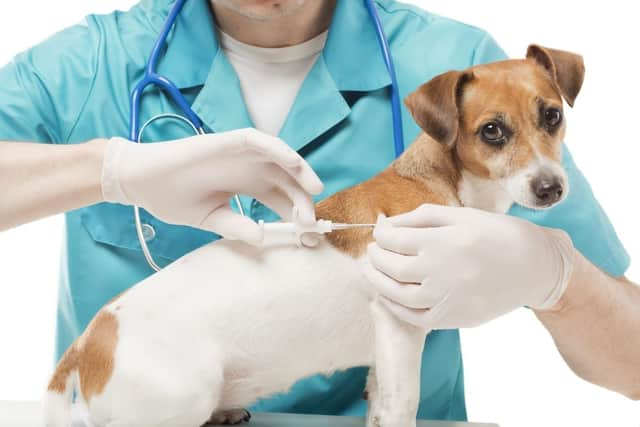Microchip your dog or face a £500 fine
This article contains affiliate links. We may earn a small commission on items purchased through this article, but that does not affect our editorial judgement.
Puppy owners are being urged to get their new pets microchipped or face a £500 fine.
Despite compulsory microchipping coming into effect on 06 April 2017, a report by The Dogs Trust (2017) says two out of three rescued stray dogs have out of date microchips, or chips that contain false information.
As a result they may never be reunited with their owners.


Advertisement
Hide AdAdvertisement
Hide AdMicrochipping a dog is a legal requirement in the UK and dog owners could land a £500 fine if their dog is not microchipped.
It’s a painless procedure for the dog, which stores the owner’s details on a national database.
The dog must be registered on either Animal Tracker, Identibase, MicroChip Central, MicroDogID, National Veterinary Data Service, Pet Identity UK, Petlog, ProtectedPet, Smartchip or UKPETtrac.
PDSA vet Rebecca Ashman said: “Here in the UK it’s a legal requirement for dogs to be microchipped. We also recommend cats are microchipped as it’s the most reliable way of identifying them and improves the chances of them being returned if they are lost.


Advertisement
Hide AdAdvertisement
Hide Ad“One of the most heartbreaking scenarios is an injured animal brought to us who isn’t microchipped, or the details aren’t up to date. You know this pet has a loving owner who is probably fraught with worry, but there’s no way to let them know what has happened. Sadly, many pets in this situation can often end up in rescue centres because their owners are never found.”
To help pet owners, Rebecca has sorted through the fact and fiction around microchipping:
Microchipped pets don’t need any other ID?
Fiction: while cats don’t need any other ID, it’s actually the law for dogs to wear a collar and ID tag when outside the home. Legally the tag should give the owner’s name and address but a phone number is also recommended.
One microchip will last the pet’s entire life?
Fact: In the vast majority of cases, a single microchip will last for your pet’s entire lifetime. The chip can sometimes move around a little, which is why it’s best to scan over a pet’s whole body when checking for one. If the pet changes owner they don’t need a new chip – the new owner can just call the company to change the details.
Won’t it hurt my pet?
Advertisement
Hide AdAdvertisement
Hide AdFiction: microchips are really tiny – smaller than a grain of rice. It’s similar to getting any other injection like a vaccination and many pets don’t even notice it happening. It goes under the skin at the back of their neck. They’re made of non-reactive material so should not cause any reaction or pain once inserted.
A microchip will show my contact details to anyone who scans it?
Fiction: a microchip scanner will only show the microchip’s unique ID number. If your pet is found and brought to a vet or rescue centre, they will scan for the number then call the microchip company to access the owner’s details. This is why it’s really important to make sure your details are always kept up-to- date in the database.
It’s really cheap to get your pet microchipped?
Fact: the cost can vary, but many councils, charities and veterinary clinics offer discounted or even free microchipping schemes. It’s worth researching what’s on offer in your area to get the best option for you and your pet.
More on pet care at www.pdsa.org.uk